BeppoSAX, the wide band mission for X-Ray Astronomy
G. Boella1,7, R. C. Butler2, G. C. Perola3, L. Piro4, L. Scarsi5, and J. Bleeker6
-
1 CNR - Istituto di Fisica Cosmica e Tecnologie Relative, Via Bassini 15, 20133 Milano -Italy
-
2 Agenzia Spaziale Italiana, Viale Regina Margherita 202, 00198 Roma - Italy
-
3 Dipartimento di Fisica, Universita' Roma 3, Via Vasca Navale 84, 00146 Roma - Italy
-
4 CNR - Istituto di Astrofisica Spaziale, Via E. Fermi 21, 00044 Frascati - Italy
-
5 CNR - Istituto di Fisica Cosmica ed Applicazioni Informatica, Via Mariano Stabile 172, 90139 Palermo - Italy
-
6 Space Research Organization of the Netherlands, Sorbonnelaan 2, 3584 CA Utrecht - The Netherlands
-
7 Dip. Fisica, Universita' di Milano, Via Celoria 16, 20133 Milano - Italy
Abstract
The X-ray satellite SAX, a major program of
the Italian Space Agency with participation of the Netherlands
Agency for Aereospace Programs, was launched on
April 30 1996 from Cape Canaveral. After launch it was
named BeppoSAX in honour of Giuseppe (Beppo) Occhialini.
The payload is characterized by a very wide spectral
coverage from 0.1 to 300 keV, with well balanced performances
both from its low and high energy instrumentation.
Its sensitivity will allow the exploitation of the full
band for weak sources (1/20 of 3C273), opening new perspectives
in the study of spectral shape and variability
of several classes of objects. Furthermore, the presence of
wide field cameras will allow monitoring of the long term
variability of sources down to 1 mCrab and the discovery
of X-ray transient phenomena. In this paper we describe
the main aspects of the mission, the operations, the scientific
capabilities of the instruments and the scientific
objectives.
Key words: Instrumentation: detectors - X-rays: general
1. Introduction
The study of the spectral and temporal behaviour of
sources over a wide range of energies is of primary importance
for the understanding of the mechanisms that,
in several instances, produce spectral features localized
in different regions of the electromagnetic spectrum. This
fact has become more and more evident in the last years,
when the efforts made by several scientists to organize
complex campaigns of simultaneous observations with different
satellites and ground-based facilities have been rewarded
by excellent results.
Send offprint requests to: L. Piro: saxsci@alpha1.ias.fra.cnr.it
BeppoSAX, Satellite italiano per Astronomia X, is the
first X-ray mission with a scientific payload covering more
than three decades of energy - from 0.1 to 300 keV - with
a relatively large area, a medium energy resolution and
imaging capabilities (resolution of about 1: 0 5) in the range
of 0.1-10 keV. This capability, in conjunction with the
presence of wide field instruments primarily aimed at
discovering transient phenomena, which could then be
observed with the wide band instruments, will provide an
unprecedented opportunity to study the wide band
behaviour of several classes of X-ray sources.
BeppoSAX is a major program of the Italian Space
Agency (ASI) with participation of the Netherlands
Agency for Aereospace Programs (NIVR). The mission
development is supported by a consortium of scientific
institutes, The BeppoSAX Consortium, composed as follows:
- Istituto Astrofisica Spaziale (IAS), C.N.R., Frascati
and Unita' GIFCO Roma
- Istituto di Fisica Cosmica ed Applicazioni Informatica
(IFCAI) and Unita' GIFCO, Palermo
- Istituto Fisica Cosmica e Tecnologie Relative (IFCTR), CNR and Unita' GIFCO,
Milano
- Istituto per le Tecnologie e Studio Radiazioni
Extraterrestri (ITeSRE), C.N.R., Bologna and Universita' di
Ferrara
- Space Research Organization of the Netherlands
(SRON), The Netherlands
- Space Science Department (SSD), ESA, Noordwijk,
The Netherlands.
The Max Planck Institute for Extraterrestrial Physics
has supported the tests and calibrations of the X-ray
optics and the focal plane detectors.
Prime industrial contractors are Alenia Spazio for the
Space Segment and Nuova Telespazio for the Ground
Segment.
The structure of this paper is as follows: in Sect.2 we
illustrate the satellite and scientific instruments; in Sect.
3 we describe the operations; in Sect. 4 we show the
scientific capabilities of the instruments and in Sect. 5 we
illustrate the main scientific objectives and the program
of the mission 1 .
2. The satellite and the scientific instruments
2.1. The scientific payload
The configuration of the scientific payload and the energy
bands covered by the different instruments are presented
in Fig. 1 and Fig. 2 respectively. The wide band capability
is provided by a set of instruments co-aligned with the
Z axis of the satellite (Fig.1), Narrow Field Instruments
(hereafter NFI) and consisting of (Table 1):
- MECS (Medium Energy Concentrator Spectrometers):
a medium energy (1.3-10 keV) set of three identical
grazing incidence telescopes with double cone
geometry (Citterio et al. 1985, Conti et al. 1994), with
position sensitive gas scintillation proportional counters
in their focal planes (Boella et. al. 1996 and references
therein).
- LECS (Low Energy Concentrator Spectrometer): a low
energy (0.1-10 keV) telescope, identical to the other
three, but with a thin window position sensitive gas
scintillation proportional counter in its focal plane
(Parmar et al. 1996 and references therein).
- HPGSPC, a collimated High Pressure Gas Scintillation
Proportional Counter (4-120 keV, Manzo et al. 1996
and references therein).
- PDS, a collimated Phoswich Detector System (15-300
keV, Frontera et al. 1996 and references therein)
Perpendicular to the axis of the NFI and pointed in
opposite directions there are two coded mask proportional
counters (Wide Field Cameras, WFC, Jager et al. 1996
and references therein) that provide access to large regions
of the sky in the range 2-30 keV. Each WFC has a field of
view of 20o x 20o(FWHM) with a resolution of 5'.
Finally, the four lateral active shields of the PDS will
be used as a monitor of gamma-ray bursts with a fluence
greater than about 10-6 erg cm-2s-1
in the range 60-600 keV, with a temporal resolution of about 1 ms.
Each instrument (the four NFI and the two WFC's) is controlled by a dedicated computer
whish has, in particular, the task of performing on
board pre-processing of
the scientific data according to the acquisition mode
required by the specific observation. The basic mode is the
Direct mode, in which each single event is transmitted
with the full information. For sources fainter than about
0.3 Crab ()
the telemetry (see next section) is sufficient to support this mode for all instruments simultaneously.
For brighter sources Indirect modes allow to reduce the telemetry by producing
on-board spectra, images and light curves with
a large choice of parameters. The scientific data packets
produced by each instrument are received by the main
on-board processor (see next Section) on the basis of the
overall telemetry occupation and instrument priority
programmable from ground.
On-line information on the mission can be obtained via
WWW at any of the following URLs:
- http://www.asdc.asi.it/bepposax/
- http://www.ias.fra.cnr.it/ias-home/sax/sax main.html
- http://www.tesre.bo.cnr.it/Sax/sax main.html
- http://astro.estec.esa.nl/SA-general/Research/Sax/mirror/sax main.html
2.2. The spacecraft and the other subsystems
The main characteristics of the spacecraft are presented
in Table 2. BeppoSAX is a three axes stabilized satellite,
with a pointing accuracy of 1'. The main attitude
constraint derives from the need to maintain the normal to
the solar arrays within 30o from the Sun, with occasional
excursions to 45o for some WFC observations. Due to the
low orbit (see next Section) the satellite will be in view of
the ground station for only a limited fraction of the time.
Data will be stored on-board on a tape unit with a
capacity of 450 Mbits and transmitted to ground every orbit
during station passage. The average data rate available to
instruments is about 60 kbit/s, but peak rates of up to
100 kbit/s can be retained for part of each orbit.
With the solar panels closed, the spacecraft is 3.6 m
in height and 2.7 m in diameter. The total mass amounts
to 1400 kg, with a payload of 480 kg. The structure of the
satellite consists of three basic functional subassemblies:
- the Service Module, in the lower part of the
spacecraft, which houses all the subsystems and the
electronic boxes of the scientific instruments;
- the Payload Module, which houses the scientific
instruments and the Star trackers;
- the Thermal Shade Structure, that encloses the
Payload Module.
The primary sub-systems of the satellite are:
- The Attitude Orbital Control System (AOCS), that
performs attitude determination and manoeuvres and
operates the Reaction Control Subsystem in charge of
orbit recovering. It includes redundant magnetomers,
Sun acquisition sensors, three star trackers, six
gyroscopes (three of which are for redundancy), three
magnetic torquers and four reaction wheels, all controlled
by a dedicated computer. The AOCS ensures a pointing
accuracy of 1' during source observations and
manoeuvres with a slew rate of 10o per min.
- The On Board Data Handler (OBDH) is the core for
data management and system control on the
satellite and it also manages the communication
interfaces between the satellite and the ground station. Its
computer supervises all subsystem processor activities,
such as those of each instrument, and the communication busses.
 Fig. 1 BeppoSAX scientific payload accomodation
Fig. 1 BeppoSAX scientific payload accomodation
Table 1. BeppoSAX Instruments
| Instrument | Range | Field Angul. | Res.(3) | Area | Energy Res. |
| | (keV) | (oFWHM) | (arcmin) | (cm2) | (%FWHM) |
| 1 LECS(1) | 0.1-10 | 0.5 | 3.5@0.25 keV | 22@0.25 keV | 8 x (E/6)-0.5 |
|
| 1 MECS(1) | 0.1-10 | 0.5 | 1.2@6 keV | 150@6 keV | 8 x (E/6)-0.5 |
|
| 1 HPGSPC(1) | 0.1-10 | 0.5 | collimated | 240@30 keV | 4 x (E/60)-0.5 |
|
| 1 PDS(1) | 0.1-10 | 0.5 | collimated | 600@80 keV | 15 x (E/60)-0.5 |
|
|
Note: 1Narrow Field Instruments (NFI);
2 per unit through mask;3raduis containing 50% of the power.
|
|---|
- Other subsystems are devoted to managing the power
generated by the solar panels and battery energy
storage (Electric Power and Solar Array Subsystem), to
raising the orbit in case of decay below 450 km
(Reaction Control Subsystem), to controlling the
temperature of the satellite (Thermal Control Subsystem)
and to ensure communication with the Ground
Station (Telemetry Tracking and Command Subsystem).
Table 2. BeppoSAX: spacecraft main characteristics
| Parameter | value |
| Dimensions: diameter | 2.7 m (sol. panels closed) |
| height | 3.6 m |
| Mass: tot. | 1400 kg |
| payload | 480 Kg |
| Power: tot. | 800 W |
| payload | 260 W |
| Sun angle constraint | 30o (max 45o ) |
| Pointing | 3 axes stabilized |
| Pointing accuracy | !1 arcmin |
| Max slew rate | 10o /min |
| On-board memory | 510 Mbit |
| Telemetry to instruments | max 100 kbit/s (average 60) |
| Downlink recorded data | 917 kbit/s |
Table 3. BeppoSAX: launch, orbit
| Parameter | value |
| Launch date | Apr. 30, 1996 |
| Vehicle | Atlas-Centaur |
| Circular Orbit at | 600 km |
| inclination | 3.9o |
| Orbital period | 96 min |
| n. orbit per day | 15 |
| contact duration | 10 min. |
| Ground Station | Malindi, Kenya |
| expected lifetime | 2-4 years |
3. Ground Operations
BeppoSAX was launched on April 30 1996 by an
AtlasCentaur directly into a 600 km, 96 min orbit at 3.9o
inclination. The satellite will thus nearly avoid the South
Atlantic Anomaly and take full advantage of the screening
effect of the Earth's magnetic field in reducing the cosmic
ray induced background, an aspect particularly relevant
for high energy instruments (HPGSPC and PDS).
The satellite will be operated directly from the
Operation Control Center (OCC) in Rome, through a
bidirectional (command transmission and telemetry data
collection) Intelsat link between the OCC and the Telemetry
and Telecommand (TT&C) station located on the
equator at the Italian base near Malindi (Kenya). The satellite
will pass over the TT&C station every orbit for a
contact period of 10 minutes. During each pass the Ground
Station will perform the following activities: telecommand
up-linking; mass memory downloading; spacecraft doppler
and ranging; spacecraft time sinchronization.
The OCC is the core of the satellite operational
management with the following activities: telecommand
generation and validation, orbit and attitude determination;
short-term telemetry archiving; health monitoring of
satellite and its sub-systems.
As part of the OCC, the Scientific Operation
Center (SOC) will deal specifically with scientific operations:
monitoring of payload parameters; quick-look analysis of
scientific data in real time, aimed in particular to bright
X-ray transients discovery and Target of Opportunity (TOO)
alert; short and long term scheduling.
The Scientific Data Center (SDC) is located in Rome,
at the same site as the OCC. Along with the Mission
Scientist it is the main interface of the scientific community
to the BeppoSAX project. Its main tasks are: collection
and archiving of the proposals from the scientific
community (Sect. 5.2); production of the list of observations
from the approved proposals to be processed by the OCC
for schedule generation; archiving of telemetry on optical
disks; production and distribution of data (FOT= Final
Observing Tape) to the observers; off-line analysis of quick
look data for TOO follow up program's assessment;
integration, development and maintainance of scientific
software and calibrations along with the Institutes of the
BeppoSAX Consortium; distribution of calibration data,
software and general information about the mission; support
to guest observers for data analysis and proposal
preparation; set up of the results data base.
The Mission Scientist overviews all the scientific
activities of the program, and in tight contact with the other
scientific components, takes care in particular of: schedule
of observations and TOO; calibrations of instruments;
issue of Announcement of Opportunities and the technical
description of the mission (Piro et al. 1995).
4. Scientific Capabilities of BeppoSAX Instruments
In Fig.3 we show the effective area of the BeppoSAX instruments.
Note that the effective area of the NFI is
increasing with energy following a power law with positive
slope. This will partially compensate for the spectral shape
of the celestial objects, though not quite completely, because
the HPGSPC and PDS are generally background
dominated whereas MECS and LECS are source dominated (Fig.4).
A relevant property of the BeppoSAX scientific payload is the
broad overlapping energy response of
the various instruments, that will allow cross-calibration
of the instruments.
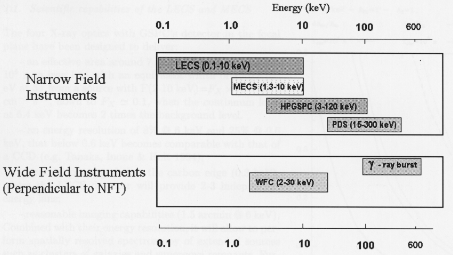 Fig. 2. Energy coverage of BeppoSAX Instrument
Fig. 2. Energy coverage of BeppoSAX Instrument
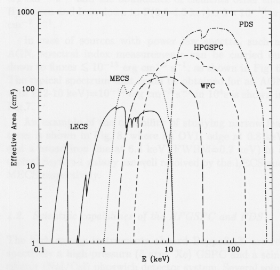 Fig. 3. Effective area of BeppoSAX instruments
Fig. 3. Effective area of BeppoSAX instruments
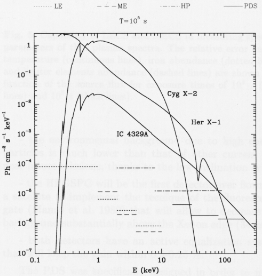 Fig. 4. Five sigma BeppoSAX NFI instrument sensitivity for
a 100 ksec exposure. For the HPGSPC and PDS it was
assumed to point for half of the time off-source to measure the
background. Spectra of representative galactic and
extragalactic sources are shown.
Fig. 4. Five sigma BeppoSAX NFI instrument sensitivity for
a 100 ksec exposure. For the HPGSPC and PDS it was
assumed to point for half of the time off-source to measure the
background. Spectra of representative galactic and
extragalactic sources are shown.
4.1. Scientific capabilities of the LECS and MECS
The four X-ray optics with GSPC's detector in the focal
plane have been designed to deliver:
- an effective area around 7 keV sufficient to detect in
105s an iron line with an equivalent width of 150/F0.5x
eV at 5sigma from a source with F(2-10 keV)=Fx x 10-11
erg cm-2s-1, down to Fx ~ 0.1, when the continium
level at 6.4 keV becomes 2 time the background level.
- an energy resolution of 8% @ 6 keV and 25% @0.6 keV,
that below 0.6 keV becomes comparable with that of
a CCD (e.g. Tanaka, Inoue & Holt 1994);
- spectral coverage below the carbon edge (0.3 keV),
where the LECS detector will provide 2-3 independent
energy bins;
- reasonable imaging capabilities (1.5 arcmin @ 6 keV).
Combined with their energy resolution, it will allow to
perform spatially resolved spectroscopy of extended sources
such as clusters of galaxies and supernova remnants.
Furthermore it will allow spectral measurements on weak
point-like sources (F(2-10 keV) 10 ~ 10-13 erg cm-2s-1,
thanks to the low backgroung included in the small size of the source spot.
In Fig. 5 we show the capability of the combined LECS and MECS to perform spectral measurments
of thin plasma spectra. Taking as reference a 30% error on
the relevant parameters we see that the temperature can
be determined down to F(0.5-4.5 kev) ~ 2 x 10-13 erg cm-2s-1,
and the abundance of elements other than Hydrogen and Iron down to F(0.5-4.5 keV) ~ 3 x 10-12
erg am-2s-1.
In case of sources with power law spectra, such as AGN, spectra index measurents can be carried
out down to fluxes 10-12 erg cm-2s-1, as
shown in Fig. 6. The typical spectrum that could be obtained for an AGN
with F(2-10 keV) = 10-12erg-2s-1 in 104s is shown in
Fig.7.
An example of the capability fo studying narrow features is shown in Fig. 8, where an OVII edge
at 0.8 keV and a broad iron line at 6.4 keV
(FWHM=0.7 keV) in a typical Seyfert 1 galaxy are well resolved by the LECS and
MECS respectively.
4.2. Scientific capabilities of the HPGSPC and PDS
The high energy instruments aboard BeppoSAX are
respectively a high pressure (5 atm. Xe) GSPC and a
scintillator (NaI/CsI) phoswich detector system. Several
solutions have been implemented to minimize systematic
effects and the background in these collimated detectors:
- the background is monitored continuosly rocking the
collimators on and off source with a typical period of one
minute;
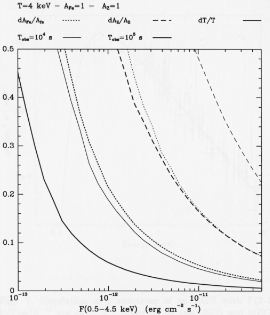 Fig. 5. Capability of LECS and MECS in measuring spectral
parameters of thin plasma spectra. The relative error on the
temperature (continuous lines), iron abundance (dotted lines)
and lighter elements abundance (dashed lines) are shown as a
function of the source flux for exposure times of 104s (thin
lines) and 105s (thick lines).
Fig. 5. Capability of LECS and MECS in measuring spectral
parameters of thin plasma spectra. The relative error on the
temperature (continuous lines), iron abundance (dotted lines)
and lighter elements abundance (dashed lines) are shown as a
function of the source flux for exposure times of 104s (thin
lines) and 105s (thick lines).
- the environmental background due to high energy
particles is much lower than that of other current and
near future missions, thanks to the low inclination orbit;
- the HPGSPC will be the first detector ever flown on
a satellite to implement the tecnique of the fluorescence
gate (Manzo et al. 1980) that will allow to decrease the
background substantially above the Xenon edge (34 keV);
- both detectors have an active equalization system
that will keep the gain within 0.5-0.25 %.
The PDS was specifically designed in order to
minimize background so as to increase its sensitivity to
background dominated sources (basically below 200 mCrab).
From this point of view the expected performance should
be comparable or better than that of the HEXTE
detector aboard XTE (Bradt, Rothschild & Swank 1993). XTE,
on the other hand, remains superior for bright sources,
given its larger area aimed to priviledge the timing
information. The PDS sensitivity allows spectral
measurements up to 200 keV for sources of about 1 mCrab (F(2-10
kev) ~ 2 x 10-11 erg cm-2s-1, Fig. 4).
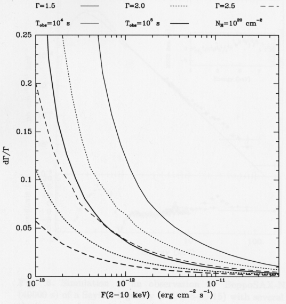 Fig. 6. Spectral index determination by the combined NFI.
The relative error on the spectral index is given as a function
of the flux for three values of the index
(Tau = 1.5 (continous line), Tau = 2.0 (dotted line), Tau = 2.5 (dashed line)) with
NH = 1020cm-2 and two values of
integration time (T = 104s: thin lines, t = 105s: thick lines).
Below F ~ 10 -11 erg cm-2s-1 the performances
are primarily due to the LECS and MECS.
Fig. 6. Spectral index determination by the combined NFI.
The relative error on the spectral index is given as a function
of the flux for three values of the index
(Tau = 1.5 (continous line), Tau = 2.0 (dotted line), Tau = 2.5 (dashed line)) with
NH = 1020cm-2 and two values of
integration time (T = 104s: thin lines, t = 105s: thick lines).
Below F ~ 10 -11 erg cm-2s-1 the performances
are primarily due to the LECS and MECS.
The main scientific motivation that lead to the design
of the HPGSPC and its inclusion in the payload is its
unprecedented energy resolution, 4% @60, that will allow
detailed line spectroscopy in hard X-rays. The
spectroscopic capabilities of HPGSPC and PDS are illustrated in
Fig.9, that represents a simulation of a possible cyclotron
absorption spectrum of a bright transient, X0331+53, a
X-ray pulsar. GINGA observed only the first harmonic and
tentatively the second one (Makishima et al. 1990). The
BeppoSAX high energy instruments can measure very well
not only the first harmonic but also determine the possible
presence of higher harmonics in a spectral range where the
information is - up to now - missing. Pulse phase
dependent spectroscopy will be easily achieved for such sources
as well.
4.3. Narrow Field Instrument combined scientific capabilities
The sensitivity curves of BeppoSAX NFI are given in fig. 4
along with spectra of some typical galactic and extragalactic
sources. Basically for AGN-like spectra it is possible to
determine the spectrum up to 200 keV for sources down to about
1 mCrab. As an example in Fig.8 we show the simulation
of the combined BeppoSAX-NFI spectrum of a
Seyfert 1 galaxy, namely MCG-6-30-15, with all the
spectral component and features detected by several satellites
in the past. Starting from the low energy part there is:
a soft excess observed by EXOSAT (Pounds et al. 1986),
an OVII edge around 0.8 keV observed by ROSAT
(Nandra and Pounds 1992) and ASCA (Fabian et al. 1994),
an iron line at 6.4 keV and a high energy bump above
10 keV detected by GINGA (Matsuoka et al. 1990). All
those components can be measured with good accuracy
with BeppoSAX in a single shot for the first time.
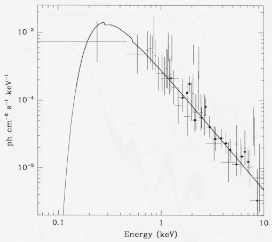 Fig. 7. Simulation of a spectrum of an AGN with F(2-10 keV)=10
Fig. 7. Simulation of a spectrum of an AGN with F(2-10 keV)=10
4.4. Scientific capabilities of WFC
The sensitivity of the WFC depends on the pointing
direction in the sky, because each source in the field of view
contributes to the overall background. Towards high-galactic
latitude the Cosmic Diffuse X-Ray Background is the main
contributor to the background. In this case the sensitivity
is at the order of a few mCrab in 10 4 s (fig. 10). This will
allow the monitoring of faint sources like AGN (Fig.11),
as well as their prime objective, which is the survey of
the galactic plane and the search of X-ray transients for
follow-up studies with the narrow field instruments.
On the basis of the logN-logS distribution of
gammaray burst and assuming Fx about 1/100 of Fgamma we expect to
detect a few X-ray counterparts to gamma-ray bursts per
year, thus positioning the events within 5' and gathering
broad band information with the simultaneous
observation of the gamma-ray burst monitor.
 Fig. 8. Simulation of an observation by BeppoSAX-NFI
(40000 s) of a Seyfert 1 galaxy (MCG-6-30-15) with several of
the features observed in the last 10 years by different satellites:
a soft excess below 1 keV (EXOSAT), an edge of ionized oxygen
at 0.8 keV (ROSAT, ASCA), a broad iron line (FWHM=0.7
keV) at 6.4 keV and a high energy bump bewtween 10 and
200 keV (GINGA). The spectrum is fitted with a simple power
law and the residuals clearly show all these components. In
the blow-up the residuals of the MECS around the broad iron
line are plotted, showing that the line is well resolved by the
detector.
Fig. 8. Simulation of an observation by BeppoSAX-NFI
(40000 s) of a Seyfert 1 galaxy (MCG-6-30-15) with several of
the features observed in the last 10 years by different satellites:
a soft excess below 1 keV (EXOSAT), an edge of ionized oxygen
at 0.8 keV (ROSAT, ASCA), a broad iron line (FWHM=0.7
keV) at 6.4 keV and a high energy bump bewtween 10 and
200 keV (GINGA). The spectrum is fitted with a simple power
law and the residuals clearly show all these components. In
the blow-up the residuals of the MECS around the broad iron
line are plotted, showing that the line is well resolved by the
detector.
5. Scientific Program
5.1. Scientific Objectives
Given the instrument capabilities over the wide energy
range described in the previous sections, BeppoSAX can
provide an important contribution in several areas of
X-ray astronomy (Perola 1990) such as:
- Compact galactic sources: Shape and variability of
the various continuum components and of the narrow
spectral features (e.g. iron line, cyclotron lines); phase
resolved spectroscopy. Discovery and study of X-ray
transients.
- Active Galactic Nuclei: spectral shape and variability
of the continuum and of the narrow and broad features
from 0.1 to 200 keV in bright objects (soft excess, warm
and cold absorption and related O and Fe edges, iron
line and high energy bump, high energy cut-off );
spectral shape and variability of different classes of AGN
down to 1/20 of 3C273 up to 100-200 keV; spectra of
weak AGN (e.g. high redshift objects) up to 10 keV.
 Fig. 9. Cyclotron lines in the transient X0331+53. The
simulation shows a possible spectrum (four harmonics) of the object
observed by the HPGSPC (crosses) and the PDS (circles) in
10,000 s. It clearly illustrates the capability of BeppoSAX of
measuring such features also in the unexplored region above
40 keV.
Fig. 9. Cyclotron lines in the transient X0331+53. The
simulation shows a possible spectrum (four harmonics) of the object
observed by the HPGSPC (crosses) and the PDS (circles) in
10,000 s. It clearly illustrates the capability of BeppoSAX of
measuring such features also in the unexplored region above
40 keV.
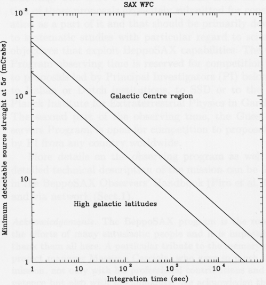 Fig. 10. Five sigma sensitivity of one WFC
Fig. 10. Five sigma sensitivity of one WFC
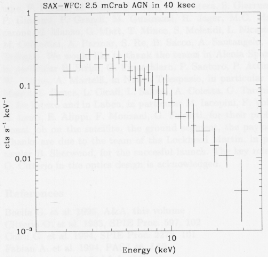 Fig. 11. The spectrum of a AGN (2.5mCrab) observed by one WFC in 40000 s.
Fig. 11. The spectrum of a AGN (2.5mCrab) observed by one WFC in 40000 s.
- Clusters of galaxies: spatially resolved spectra of
nearby objects and the study of temperature
gradients; chemical composition and temperature of more
distant clusters.
- Supernova remnants: spatially resolved spectra of
extended remnants; spectra of Magellanic Cloud remnants.
- Normal Galaxies: spectra from 0.1 to 10 keV of the
extended emission.
- Stars: multi-temperature spectra of stellar coronae
from 0.1 to 10 keV; temperature/spatial structure of
coronae by observation of eclipsing binary systems;
evolution of flares.
- Gamma-ray bursts: temporal profile with 1 msec
resolution from 60 to 600 keV. X-ray counterparts of a
subset with positional accuracy of 5'.
5.2. Strategy and Operations
Due to the constraint on the solar panel orientation
(Sect.2.2), the sky region accessible to the NFI at any
time is a band 60o wide (50% of the sky, slightly larger
for the WFC)) in the direction perpendicular to the sun
vector. In six months all the sky will be therefore
accessible. Depending on target position, the observing eociency
will be limited to 50% on average by Earth eclipses (the
Earth subtends an angle of about 130o at 600 km) and by
passages skirting the edge of the South Atlantic Anomaly.
With a lifetime of two - four years, BeppoSAX will be
able to perform 1000-2000 pointings with durations from
10 4 s to 10 5 s. The NFI will be the prime instruments
most of the time. When the NFI perform their sequence
of pointed observations, the WFC will be operated in
parallel (secondary mode) to point preferentially towards the
galactic plane, to catch X-ray transients, or to monitor
selected regions of the sky. We expect to detect about
10-20 bright X-ray transients per year during the WFC
observations. The observing program will be held flexible
in order to accommodate these TOO for follow-up
observations with the NFI, and the operational capability of
BeppoSAX will allow an unexpected new target to be
acquired within half a day of its discovery.
Thanks to their large field of view and the distribution
of the NFI targets in the sky we expect that, in addition
to the Galactic plane, a large fraction of the high
Galactic latitude sky will also be covered by the WFC with a
sensitivity of about 1 mCrab.
The observing time of BeppoSAX is allocated on the
basis of proposals submitted in responce to
announcements of opportunity and selected by a Time Allocation
Committee (TAC) under the auspices of the BeppoSAX
Scientific Steering Committee. The observing time is
divided in two parts. The first part is devoted to a Core
Program amounting to 80% in the first round of 12 months,
to 60 % the second round of 12 months and 50% in the
following. The Core Program will result from the
selection of those proposals explicitely submitted for
consideration as a part of it and that should be primarily devoted
to systematic studies with particular regard to scientific
objectives that exploit BeppoSAX capabilities. The Core
Program observing time is reserved for competition only
to proposals led by Principal Investigators (PI) belonging
to Italian or Dutch institutions, to SSD or to the Max
Planck Institute for Extraterrestrial Physics in Garching.
The second part of the observing time, the Guest
Observers Program, is open for competition to proposals led
by PI from any country worldwide.
More details on the observing program as well as a
detailed technical description of the mission can be found
in the BeppoSAX Observers' Handbook (Piro et al. 1995)
and via network (Sect.1).
Acknowledgements
The BeppoSAX program is the result of
the efforts of many entusiastic people and it is impossible to
thank them all here. A particular tribute to the memory of the
project manager Massimo Casciola, who gave so much to the
mission, not only with his professional contributions and
competence but also with his humanity. We acknowledge the key
contribution to the mission by G. Di Cocco, B. Taylor, by the
ASI team G. Manarini and B. Negri and R. Ibba, by NIVR, in
particular A. Hoeke, by M. Palenzona of ESTEC, and by all the
scientists and technical staff of the Consortium institutes and
SDC, in particular L. Chiappetti, G. Conti, E. Costa, D.Dal Fiume,
F. Favata, M. Feroci, F. Fiore, F. Frontera, S. Giarrusso,
P. Giommi, P. Grandi, M. Guainazzi, R. Jager,
M.C. Maccarone, G. Manzo, G. Matt, T. Mineo, S. Molendi, L. Nicastro,
M. Orlandini, A. Parmar, S. Re, B. Sacco, A. Santangelo, M.
Trifoglio. We would like to thank the teams in Alenia Spazio,
in particular B. Strim, G. Finocchiaro, P. Santoro, P. Attina',
W. Cugno, A. Martelli, in Nuova Telespazio, in particular M.
Manca, L. Bruca, L. Cicali, L. Salotti, A. Coletta, G. Tarchini,
C. De Libero and in Laben, in particular M. Iacopini, F. Volpi,
A. Lenti, E. Alippi, F. Monzani, G. Falcetti, for their
professional job on the satellite, the ground segment, the payload.
Thanks are due to the team of the Lockheed Martin, in
particular B. Sherwood, for the succesful launch. The key role of
O. Citterio in the optics design is acknowledged.
References
- Boella G. et al. 1996, A&A, this volume
- Citterio O. et al. 1985, SPIE Proc. 597, 102
- Conti G. et al. 1994, SPIE Proc. 2279, 101
- Fabian A. et al. 1994, PASJ 46, L59
- Frontera et al. 1996, A&A, this volume
- Jager R. et al. 1996, A&A, this volume
- Makishima et al. 1990, Ap.J. 365, L69
- Manzo G., Davelaar J., Peacock A. et al., 1980, Nucl. Instr. & Methods A 177, 603
- Manzo G. et al. 1996, A&A, this volume
- Matsuoka M., Piro L., Yamauchi M., Makishima M. 1990, ApJ, 361, 440
- Nandra P. and Pounds K. 1992, Nature, 359, 215
- Parmar A. et al., 1996, A&A, this volume
- Perola G.C. 1990, Adv. in Space Res.,10,n.2, 295
- Piro L. et al., 1995, SAX Observers' Handbook, issue 1.0
- Pounds K. et al. 1986, M.N.R.A.S., 221, 7P
- Tanaka Y., Inoue H. & Holt S.S., 1994, PASJ, 46, L37
